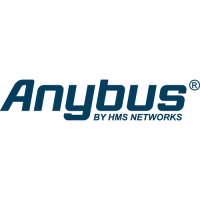Basic Operation 14
Doc.Id. HMSI-27-212
Anybus CompactCom 40 EtherNet/IP
Doc.Rev. 1.5
2.2.3 EtherNet/IP & CIP Implementation
By default, the module supports the generic CIP profile. Optionally, it is possible to re-route requests to
unimplemented CIP objects to the host application, thus enabling support for other profiles etc.
To support a specific profile, perform the following steps:
• Set up the identity settings in the EtherNet/IP Host Object according to profile requirements.
• Implement the Assembly Mapping Object in the host application.
• Set up the Assembly Instance Numbers according to profile requirements.
• Enable routing of CIP messages to the host application in the EtherNet/IP Host Object.
• Implement the required CIP objects in the host application.
See also...
• “EtherNet/IP Host Object (F8h)” on page 161 (Host Application Object)
• “Command Details: Process_CIP_Object_Request” on page 166
2.2.4 Web Interface
The web interface can be fully customized to suit a particular application. Dynamic content can be cre-
ated by means of JSON and SSI scripting. Data and web pages are stored in a FLASH-based file system,
which can be accessed using any standard FTP-client.
See also...
• “File System” on page 20
• “FTP Server” on page 22
• “Web Server” on page 24
• “Server Side Include (SSI)” on page 33
• “JSON” on page 51
2.2.5 Socket Interface (Advanced Users Only)
The built in socket interface allows additional protocols to be implemented on top of TCP/IP.
See also...
• “Socket Interface Object (07h)” on page 109 (Anybus Module Object)
• “Message Segmentation” on page 189

